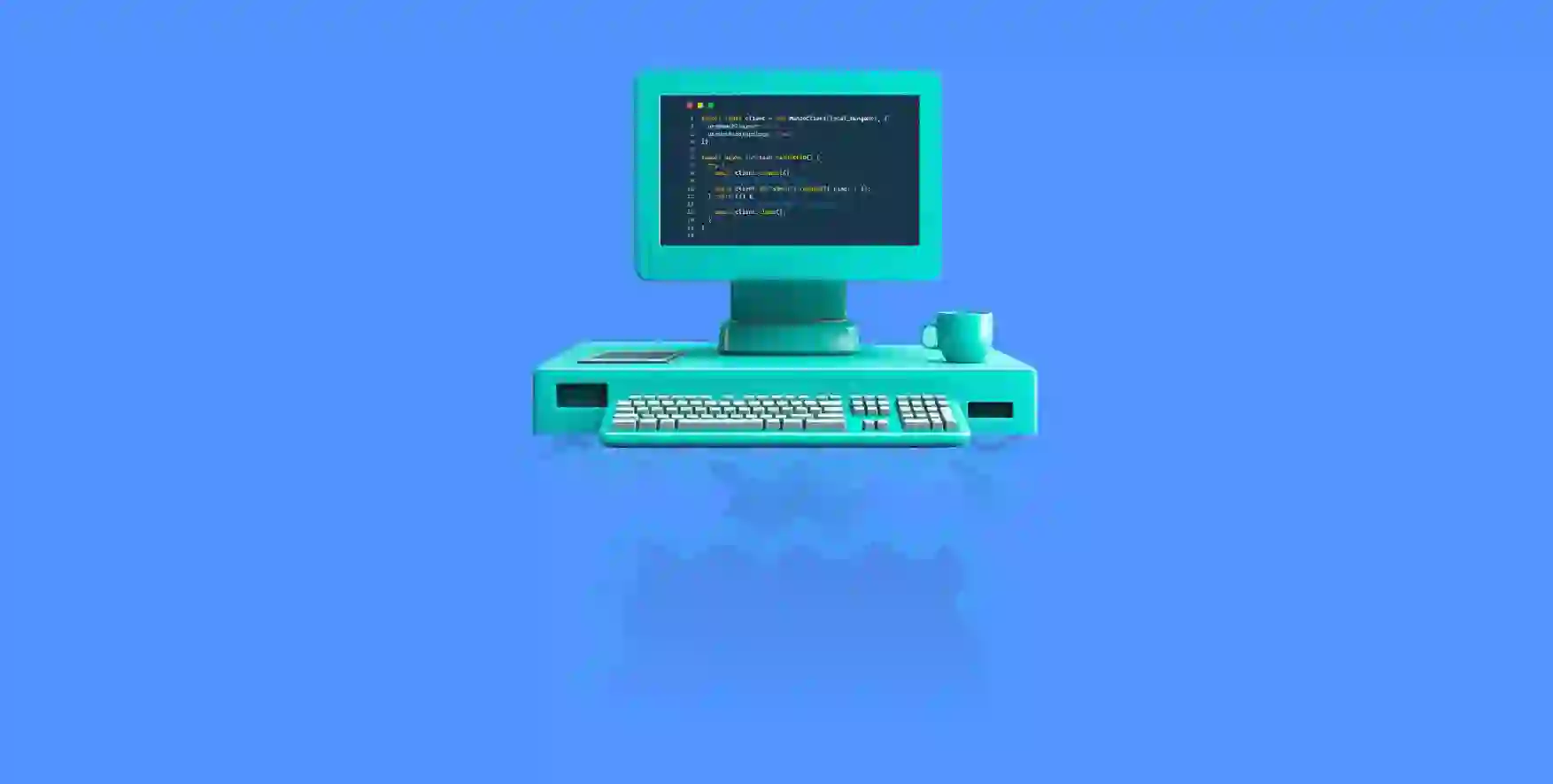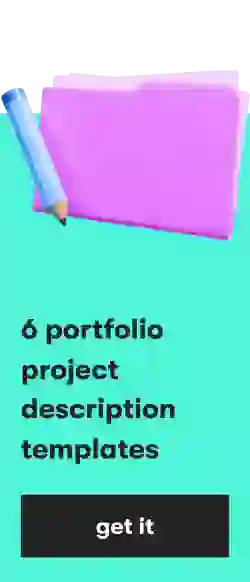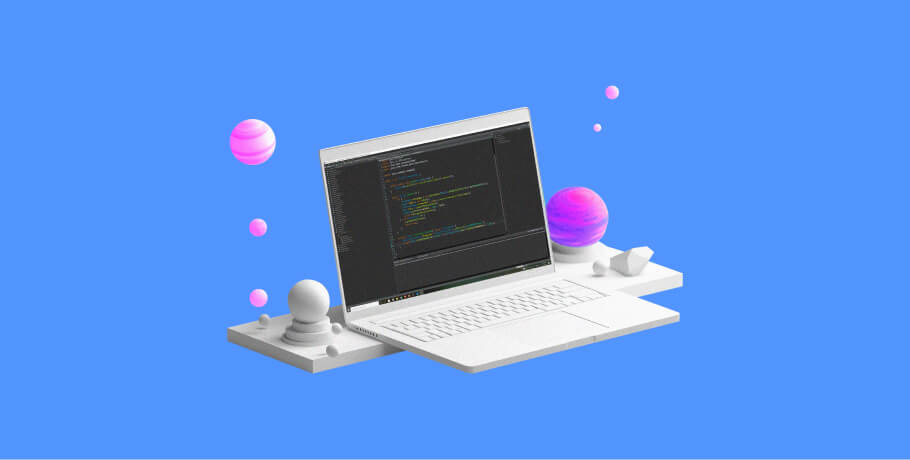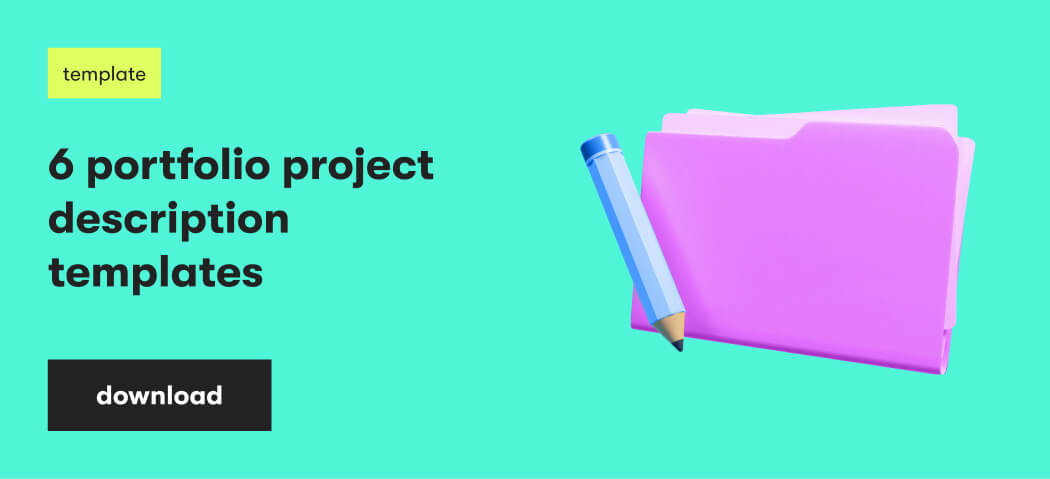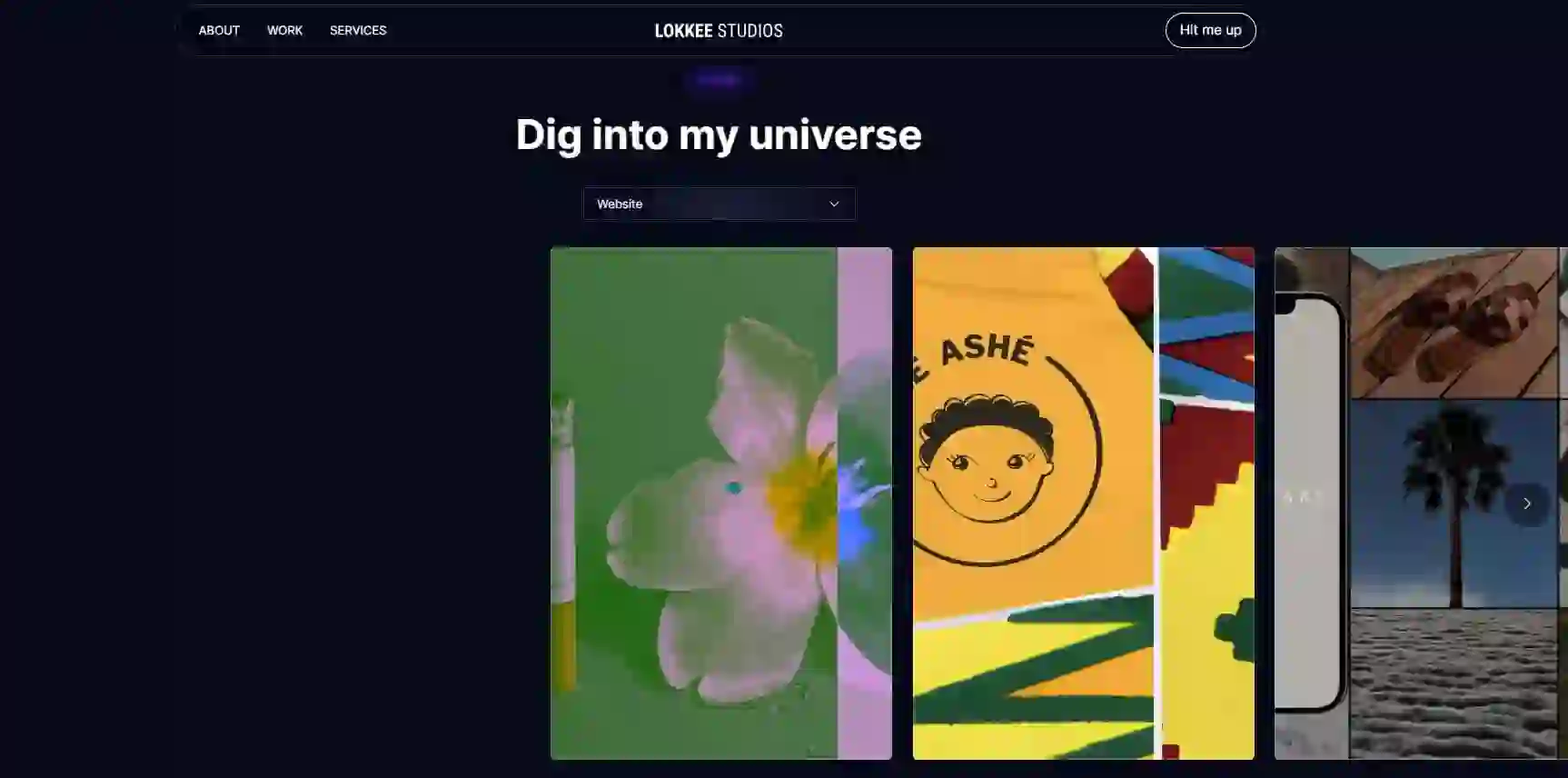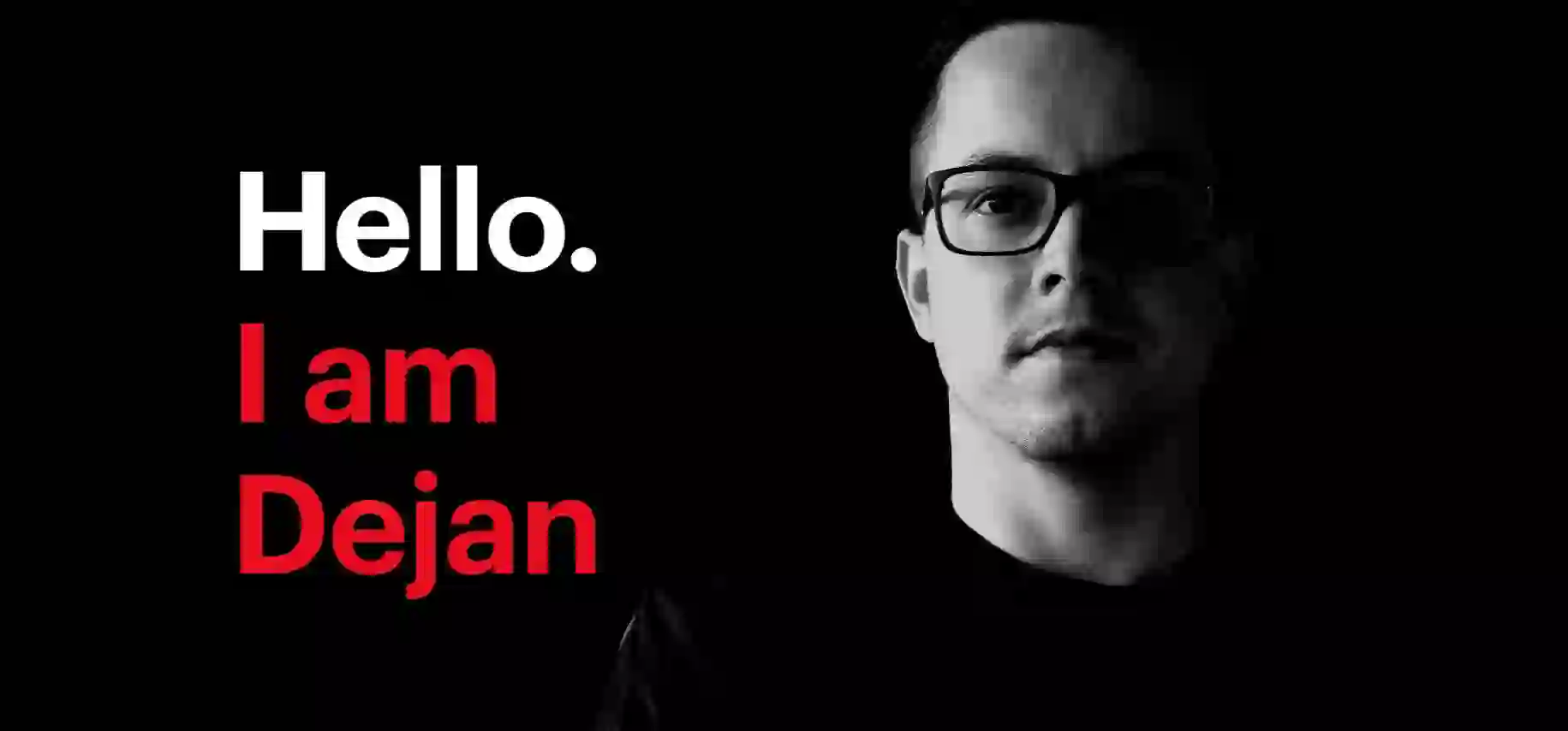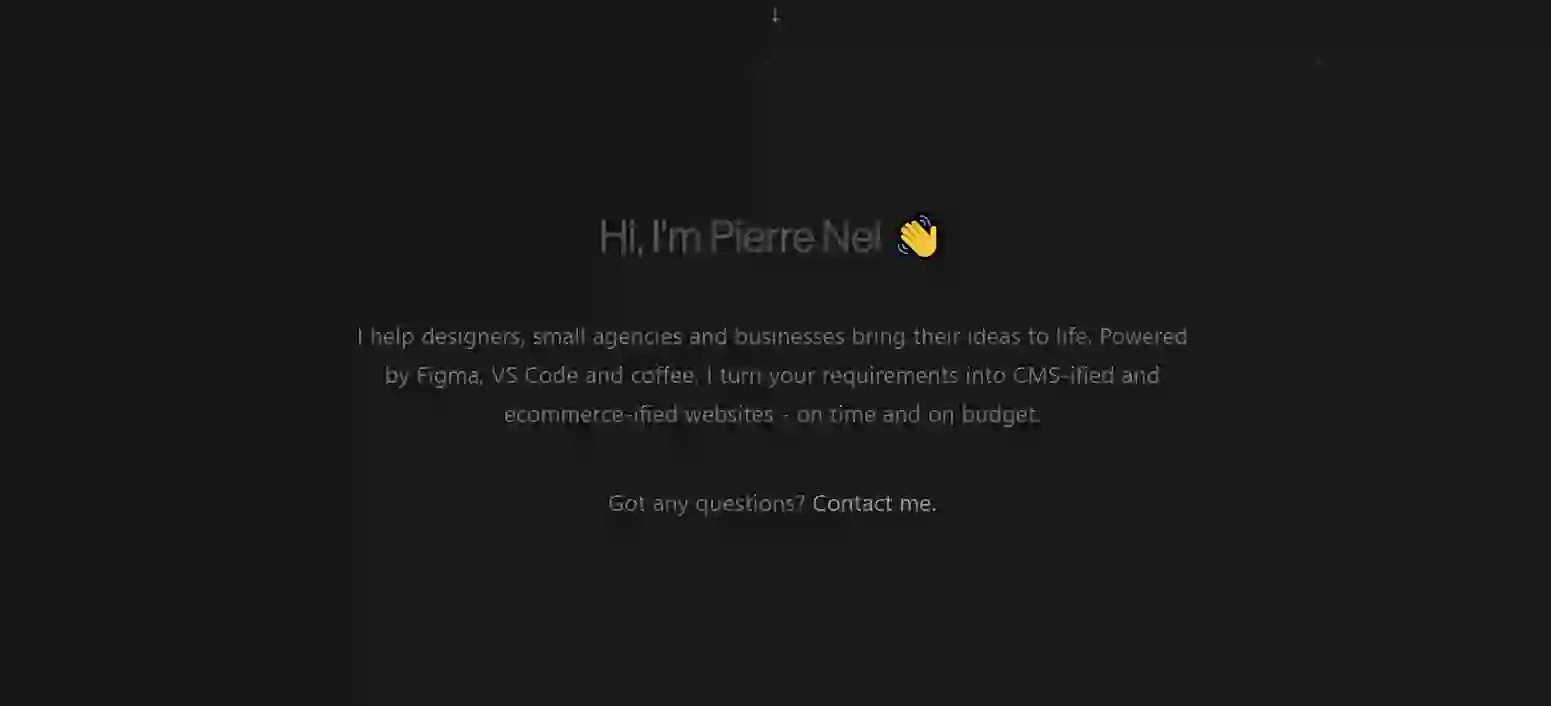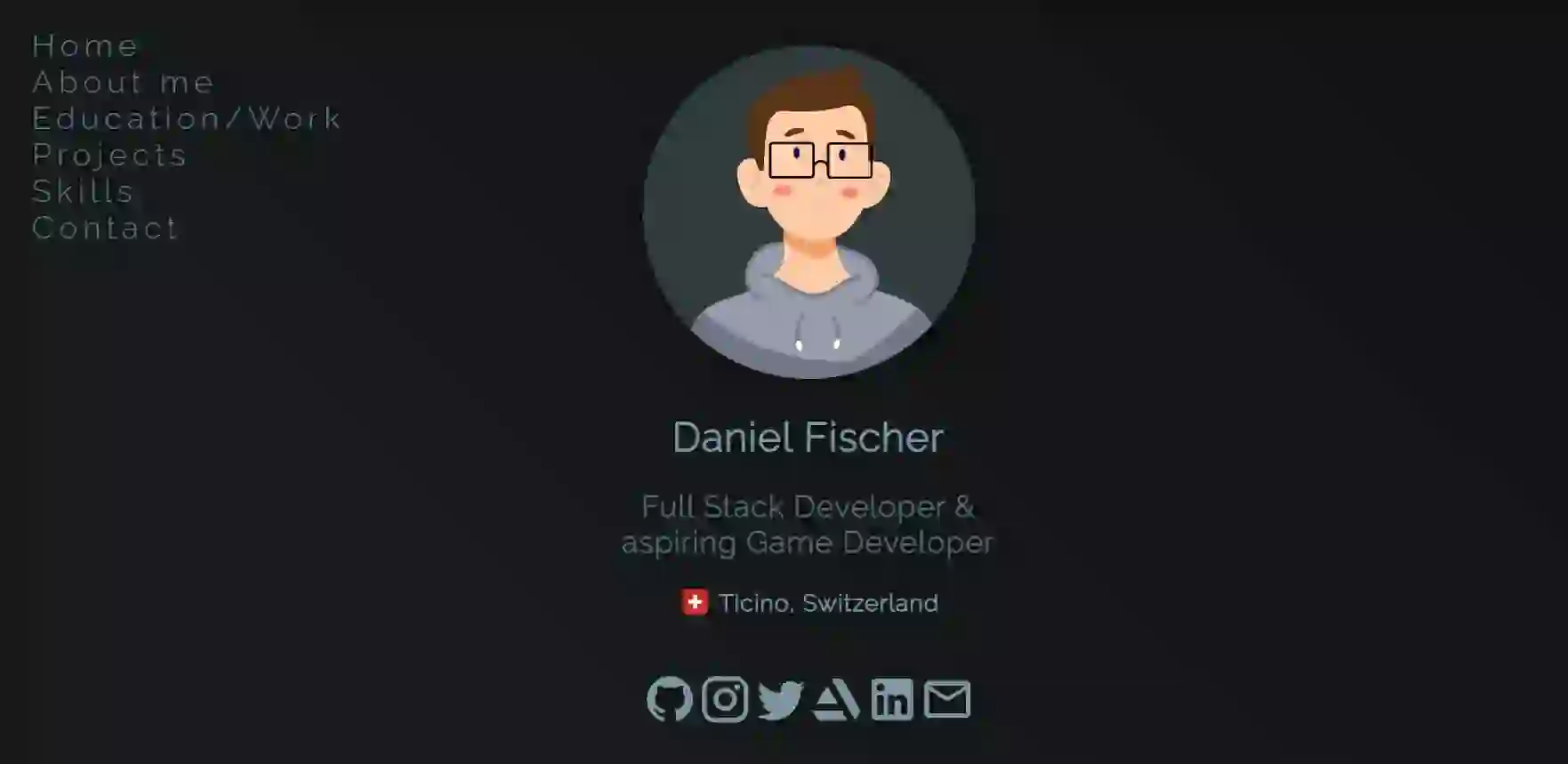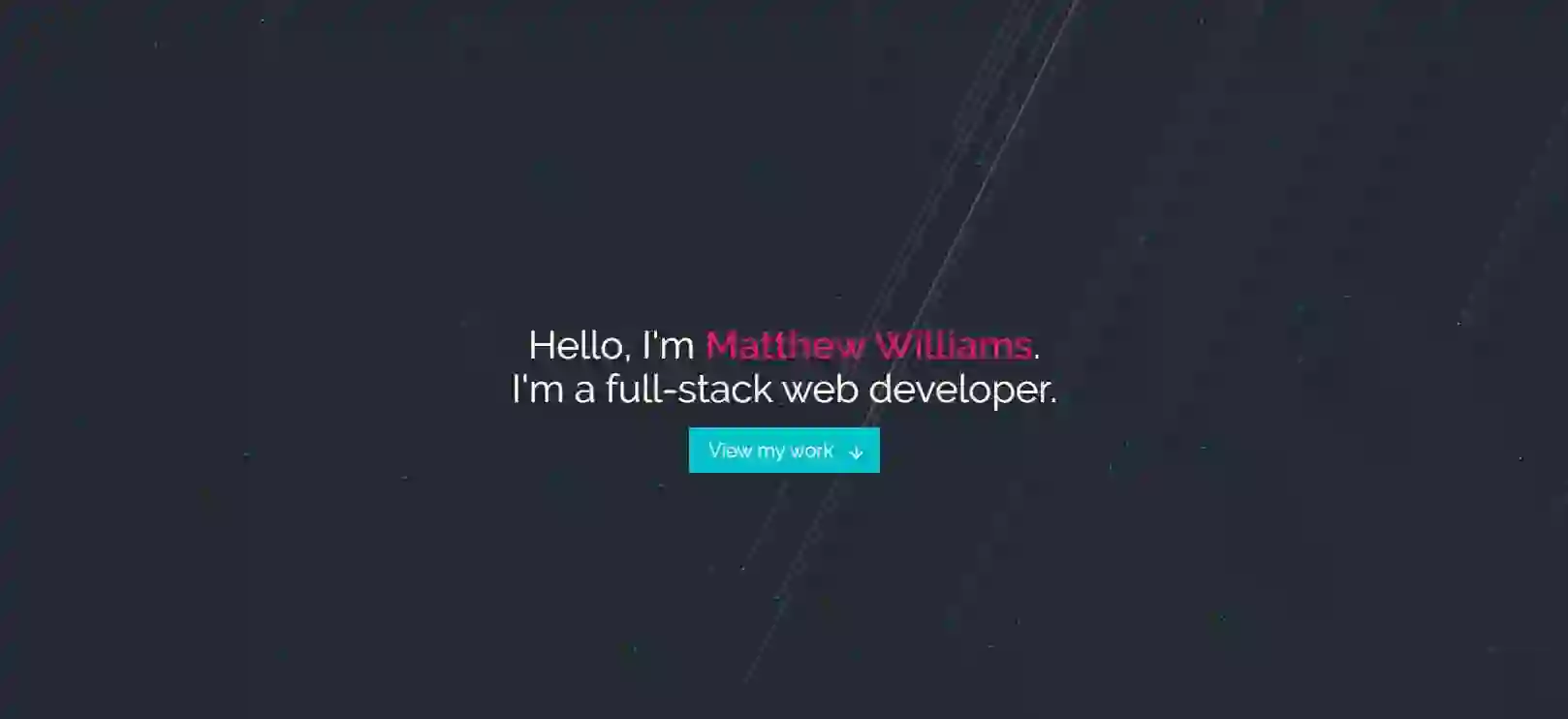Any experienced developer in search of work knows how important it is to have a portfolio. It is a great way to get your foot in the door, make an impression, and communicate your skills in an easy-to-understand way.
Backend developers are tasked with creating the logic and functionality of a website, including connecting to databases, security measures, and handling user requests. A portfolio can be a great way to demonstrate these skills, whether you are looking for long-term or freelance work.
So, what does creating a backend developer portfolio entail, and what are some examples you can look to for inspiration?
In this article, we get into the details to offer a clearer look at a backend developer’s portfolio and how to craft one.
ready to make your next career move?
Send us your CV and we'll get back to you with a matching remote backend developer job at EPAM Anywhere
Why is it essential for a backend developer to have a portfolio?
We can boil it down to this: it’s a great way to showcase your skills, highlight your achievements, and attract the attention of business clients or potential employers.
In our current world, backend developers can find success as technology company employees or hire their services out as freelancers. Whichever route you take to apply your skills, having a portfolio allows you to showcase your skills and credentials to get access to backend developer jobs.
It is also a way to stand out from your peers and competitors while sharing your learning journey and passion for the field.
What tools and resources do you need to build a backend developer portfolio?
Now, we get to building a backend developer portfolio. How do you do it? What tools and resources can you use?
1. A platform to build your website
You can use a website builder or template to get started. Even though what a backend developer does is abstracted from the front-facing part of the website users interact with, you must make it an appealing selection that draws in the viewer instantly.
Building the website could also showcase your web development skills over a wide range of fields, further solidifying your abilities in the eyes of potential employers.
Some examples of platforms you can use include Kamatera, Adobe Portfolio, Behance, Wix, Dribble, Coroflot, Crevado, and more.
2. Web frameworks
Every back end developer uses frameworks as a standard way to build and deploy web apps. They include APIs, modules, libraries, and so on, meant to simplify everyday tasks like authentication, routing, and database access.
Some programming language frameworks you can use for this include Laravel, Ruby on Rails, Node.js, and Django. They can help you create a portfolio website that showcases your backend development skills and knowledge.
3. Code editors
You will need code editors to help you write, edit, and debug code. You can access syntax highlighting, testing tools, error checking, code completion, and more. Some well-known editors include Visual Studio Code, Atom, and Sublime Text.
Code editors can help you write and edit code for your portfolio website and showcase your coding style and proficiency.
4. Version control systems
With version control, you can showcase your organization and documentation skills on your portfolio. Tools like Git, Mercurial, and SVN can help you create, merge, and revert branches, collaborate with other developers, and back up your work.
5. Hosting services
Hosting services provide the space and resources for your website or app to run online. Depending on your budget and needs, you can choose from different plans and features. Some examples of hosting services include AWS, Heroku, and DigitalOcean.
What should be included in your backend developer portfolio?
With everything set up and ready to go, let’s discuss what goes in the portfolio. As a backend developer, you will need to ensure that you include the following things in your portfolio:
Create an impressive homepage
People first see this when they click on the link to your portfolio. Making a good impression and capturing their attention is therefore crucial. Your homepage should introduce you and your expertise, provide ways to reach you, and offer information and links to other profiles, like a GitHub account.
Ensure the layout is visually appealing and easy to navigate, with a consistent design that makes it easy to click through any other pages you may have.
Showcase your skills
There are several ways to do this. One of the most popular ways is to create a website that showcases your skills. A website does not just have to be about what you say about yourself but also a way to show your technical side.
Expert backend developers on forums emphasize that you should consider the following tips to ensure consideration for office-based or remote backend developer jobs.
- Build a web server and make it internet-accessible.
- Show a backend has an API on the frontend.
- Use POST/PUT calls to update the database and GET calls to return data.
- Use postman, curl or wget to call your API.
- Show you know SQL/MySQL (create a database, tables, insert records, update, delete, index, and manage the data).
- Show what an ORM is and how to use at least one.
- Write reports against the data in your database.
- Output different file types from the database.
- Understand authentication and security.
- Understand encryption, basic PCI requirements.
- Show source code is stored in version control (Git).
- Show a basic understanding of CI/CD.
Any project proving you're knowledgeable is welcome in your portfolio; there are more things you can do in addition to this.
Add your achievements
If you have done any project, received a certification, or completed a course or degree, put it on your website! Not only does a list of achievements give you legitimacy, but also makes anyone looking for someone with your skills more confident about talking to you.
Your portfolio is a large part of your resume as a backend developer and can even help you negotiate your backend developer salary, based on just your past work.
Whether you are a freelancer or looking to work in a long-term position, showcasing your backend projects for portfolio purposes ensures that anyone looking for that same service considers you.
Top 8 examples of portfolios for backend developers
Just like we have done with our guide to creating your software engineer portfolio with examples, we are going to dive into some of the websites that show the most promise when it comes to showcasing what you can do as a backend developer.
Let’s dive in.
1. Lokkee Studios

The website is created using fullpage.js by Killian, who invites us to dig into his universe and see his services on the homepage. There is a ‘Hit me up’ button for easy contact and plenty of past projects and reviews from past clients. You get all that in one page, plus pricing, including a custom option to fit your budget.
At the bottom, you can find source code for the backend projects he’s done, giving visitors a single-page summary of what they need to know.
2. Dejan Markovic

As soon as you open the website, the words ‘Hello. I am Dejan’ slide into view, with the developer’s photo to the side. Hovering over the words reveals a hidden menu leading to the Work, About, and Contacts pages.
Some projects showcased in the portfolio include a countdown app, a digital product design platform, a platform for achieving personal goals, an app for children with special needs, and a selection of freelance projects.
3. Cory Hughart
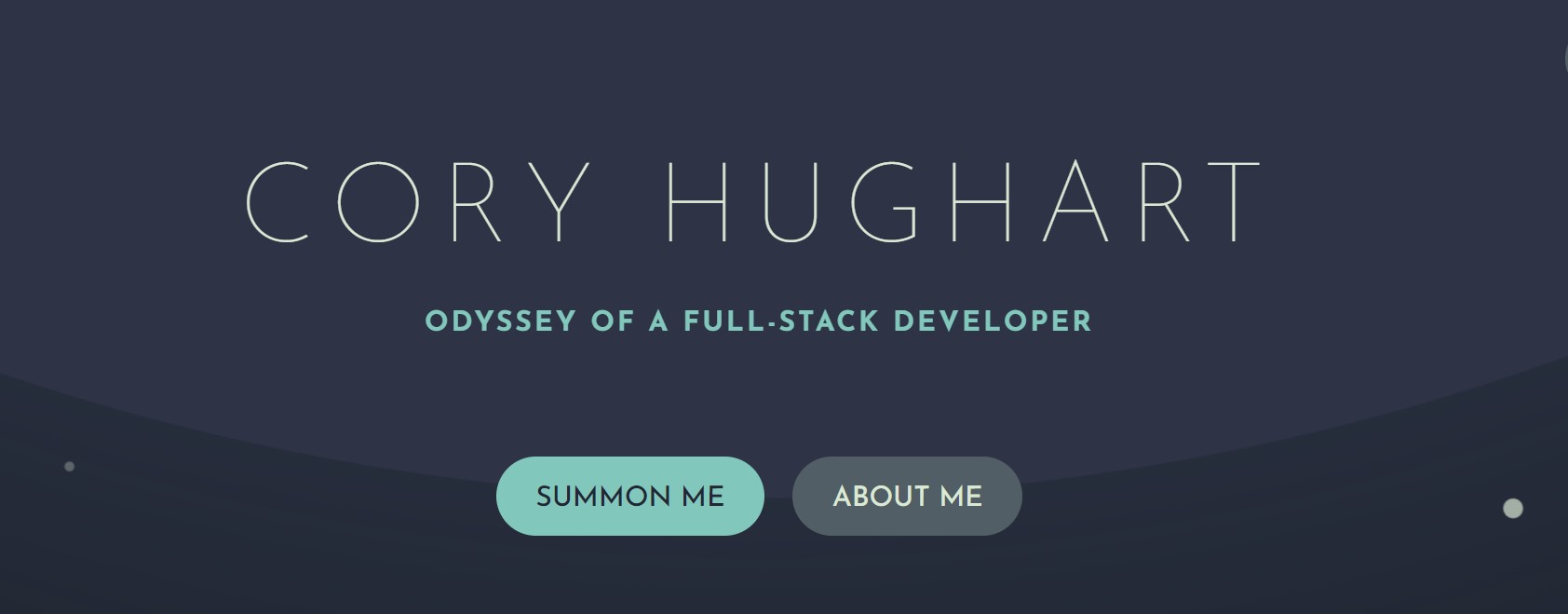
Cory is a full-stack developer with plenty of expertise to showcase. After a confident introduction that assures us he can make ‘just about anything,’ we move on to his latest projects and the option to view them all: his resume (where he details employment), skills (across development and design), and finally, his education.
Hughart uses his unique tone and voice to communicate all this information in a way that welcomes visitors in and encourages them to trust that he knows what he is talking about, with the background and projects to back it up.
4. Pierre Nel
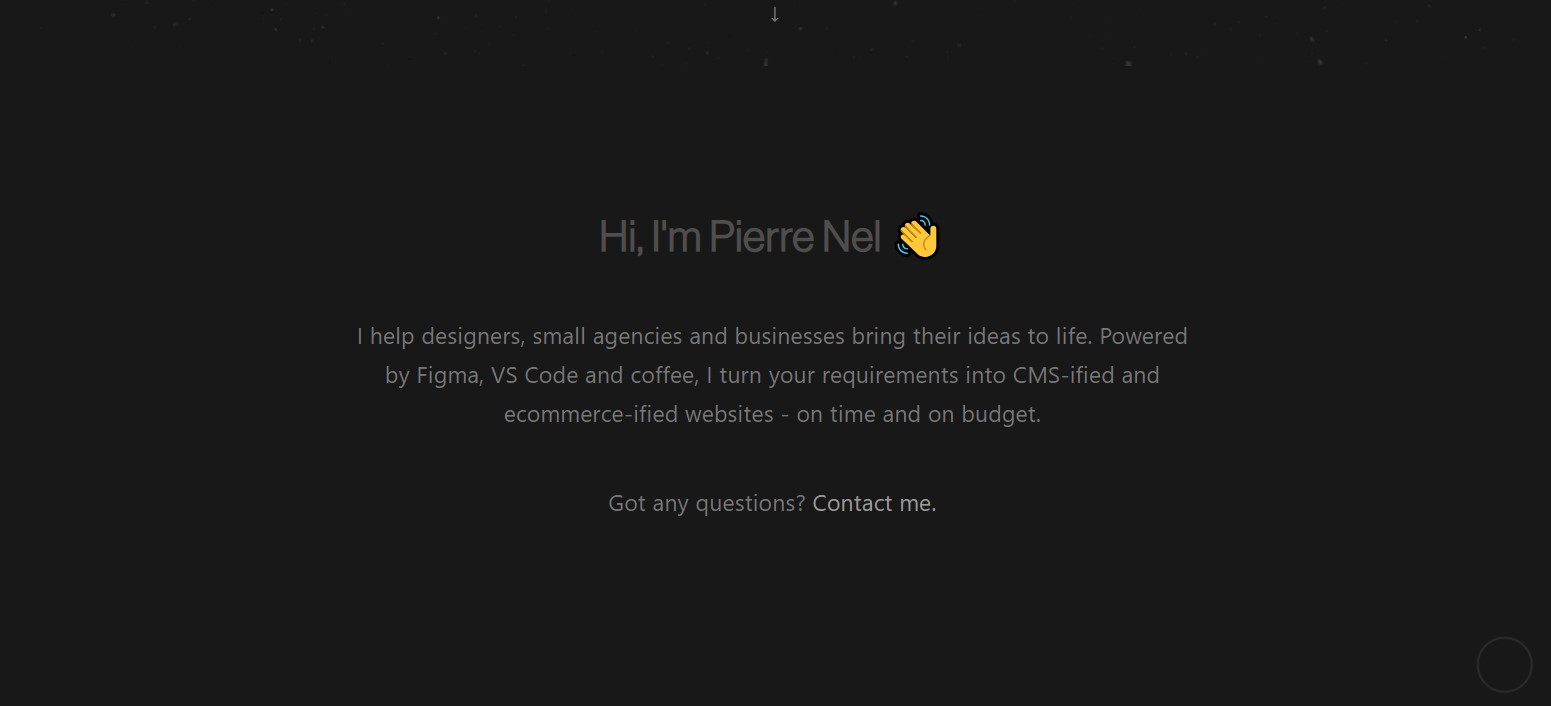
Pierre Nel is a web developer specializing in design, frontend and backend development, utilizing React, Vue, Angular, Laravel, WordPress, and more technologies. He uses a simple dark theme and smooth scrolling effect on his website.
It starts with who he is and what he does. Scrolling lower reveals recent work with companies like PBJ Management, Acierta Retail, Hot Pottery, and more. His previous work for Cartoon Network, BBC, Annie Lennox, and other recognizable names further boosts his credibility.
5. Daniel Fischer

With a consistent design, Fischer presents the most pertinent information in one page. There’s a menu to navigate to Education/Work, Projects, Skills, About Me, and Contact Pages. The homepage details who he is, his hobbies and interests, educational achievements, solo projects, group projects, and skills.
Fischer’s website makes it easy for any visitor to find out what they need to hire him. The design can inspire you to make something as succinct and easy to take in as this while adding links to your backend projects for easy viewing.
6. Timmy O’Mahony
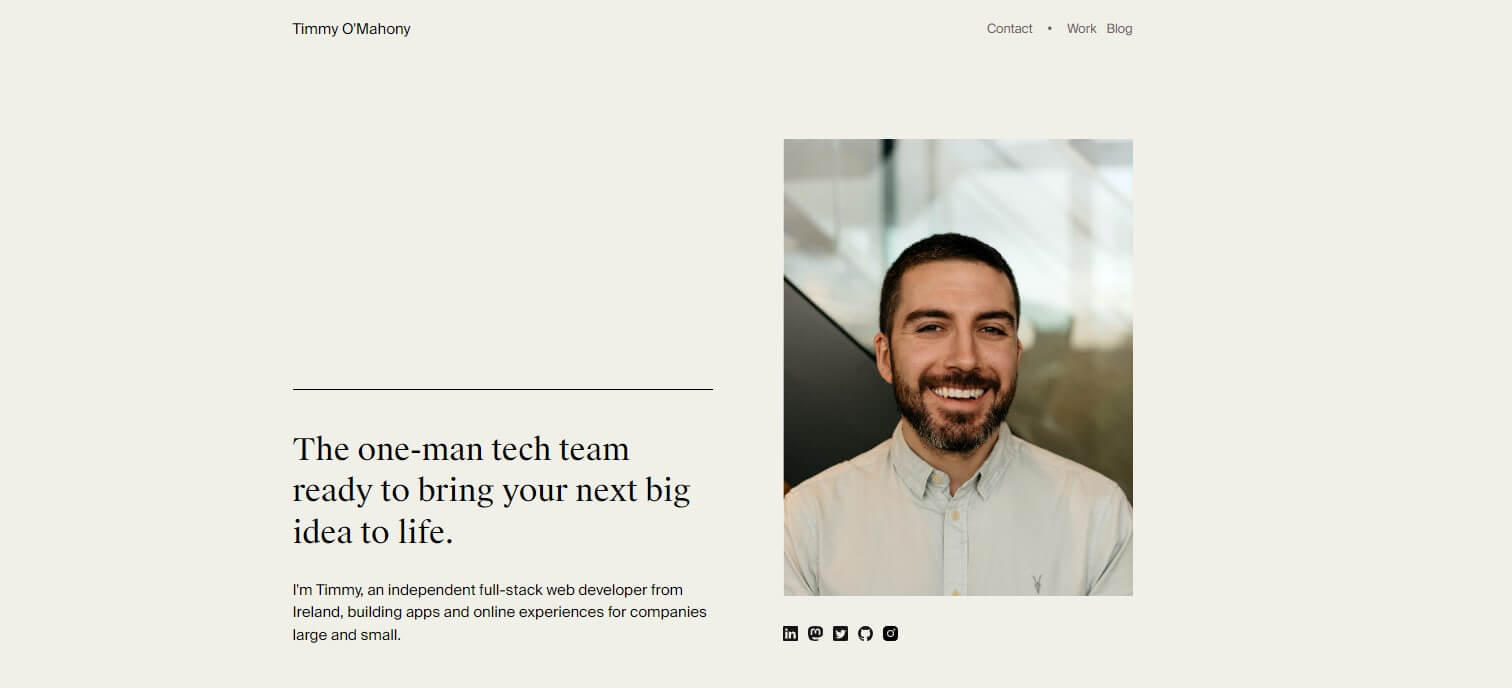
Timmy’s website is simple, as many backend developer portfolios tend to be. It does more explaining than it does showing but provides plenty of links to find the work he’s done and how complex it is. As a full-stack developer, O’Mahony can work on the front- or backend.
On the homepage, you get the intro, an invitation to reach out, reviews from past clients, a list of brands he has worked with, and recent projects and work. What’s more, Timmy further flexes his technical abilities through a blog section based on his recent challenges/tasks and how he managed to get through them.
7. Matthew Williams

Matthew may be a frontend developer more than anything, but his website design is worth learning from. You can quickly view the home page, about page, portfolio, blog, and contact options on the same page.
It’s the design that we are interested in. While backend projects are less about what you can see, your website isn’t. As such, creating a website as attractive and intuitive as this is a great way to sell yourself as a backend developer to recruiters/employees who may not be all about the technical side of you.
8. Rafael Caferati
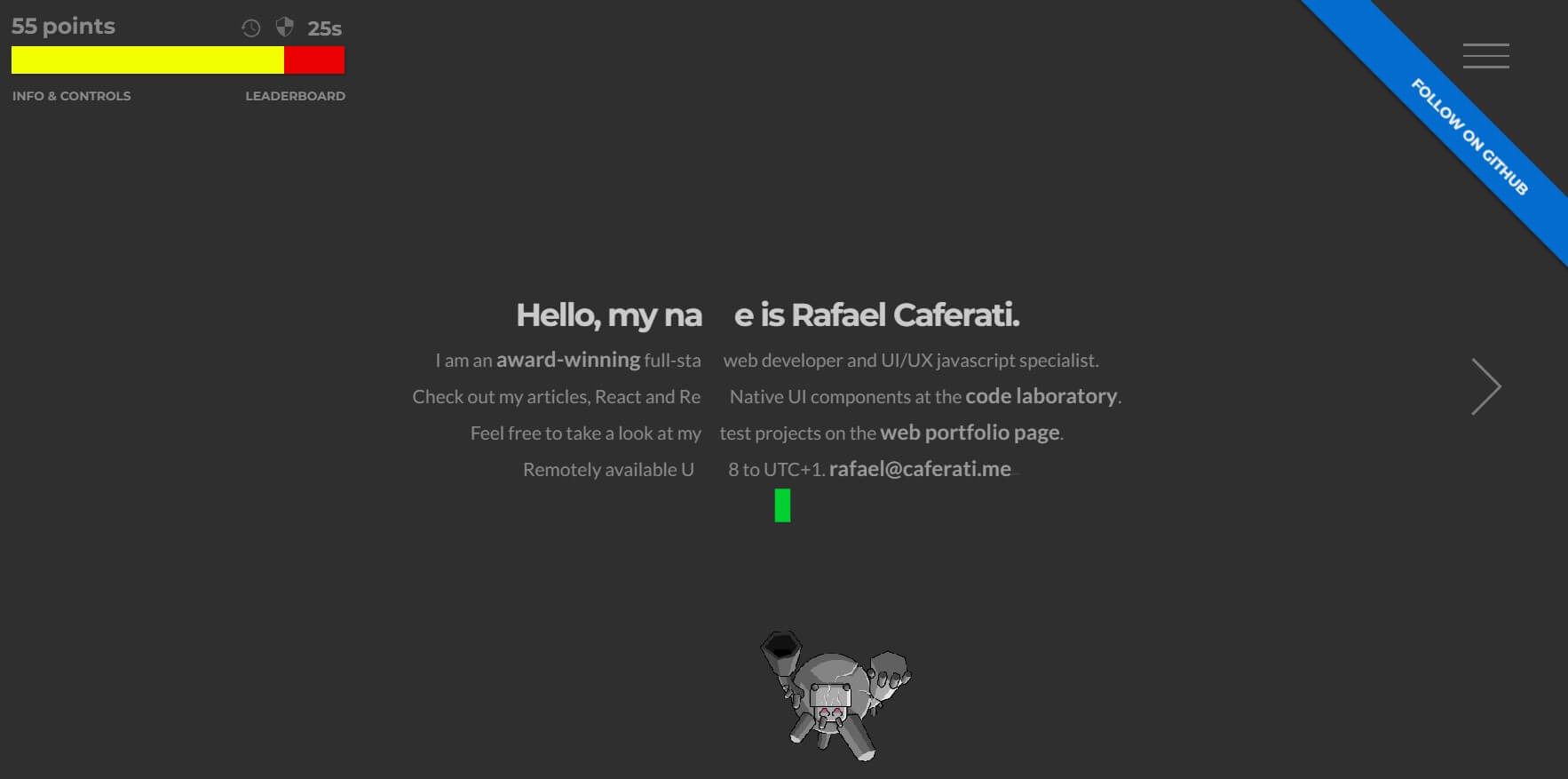
Rafael Caferati’s website is arresting. The introduction appears as if carved by an invisible laser onto the page. It doesn’t take long to spot the button saying ‘Destroy Website’; of course, you press it. It’s a game! In the style of Space Invaders! What? There’s even a scoreboard and leaderboard. That’s a show of force from the backend right there.
Once your excitement subsides, you start to notice just how well-thought-out the portfolio is. You can access his about, portfolio, labs, and contact pages by scrolling right or using the menu in the top right corner.
How to present your portfolio during an interview
How you present your portfolio during a back end developer interview depends on what is most convenient for the interviewer. However, you can present it as a website, slides in a presentation, or printed documents.
Here are some tips to help you with portfolio presentation:
- Prepare before the interview: before you show up, ensure your portfolio is edited, up-to-date, organized, and easy to follow. You should include all the pertinent information, including a brief description, screenshots, and links to a live website and project source code.
- Research the company and your role: You should ensure your portfolio speaks to the needs of your potential employee, specifically by tailoring it to the backend developer job description. That means tailoring it to highlight how you are uniquely positioned to deliver the best value to your employees. It is also a great way to align your presentation with the company’s culture, values, and goals.
- Practice: Preparing means knowing what you will say before you say it. That requires practicing with possible interview questions and getting feedback from friends, mentors, and peers on how you approach them. It will help hone your storytelling skills and give you an easier time explaining your backend development projects. It is also a chance to show you are passionate about the field.
Across all your interactions with the potential employer, keep it professional, and be prepared to tackle any question you may not have expected by going through the material before the interview. We give this advice to anyone learning how to make a portfolio to land a job in tech.
Conclusion
We hope you now feel confident enough in your ability to create a portfolio that stands out. It’s all about presentation. We invite you to look back at the section where we talk about what should go in your portfolio. At the end of the section, we list things you can show with your website that prove your knowledge.
Use explainers, blogs, and other educational-style material that delves deeper into what you did on a specific project. What backend challenge did you have, and how did you solve it? Do not forget to make your website attractive, even though the frontend isn’t what you want to sell. How good your website looks matters.
Good luck with your search, and may your portfolio be with you!
FAQ

With a focus on remote lifestyle and career development, Gayane shares practical insight and career advice that informs and empowers tech talent to thrive in the world of remote work.
With a focus on remote lifestyle and career development, Gayane shares practical insight and career advice that informs and empowers tech talent to thrive in the world of remote work.
Explore our Editorial Policy to learn more about our standards for content creation.
read more